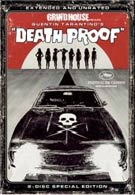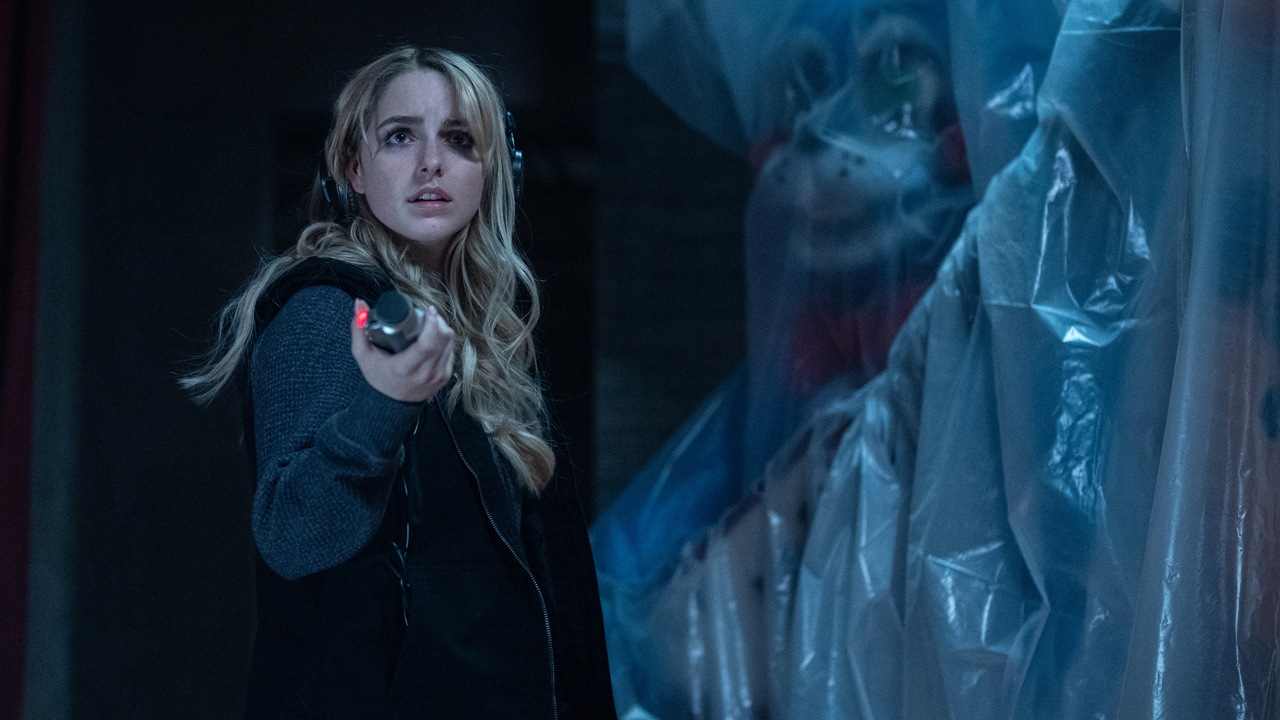Despite mostly being things of the past, Grindhouses gained popularity this year as Quentin Tarantino and Robert Rodriguez emulated the style of the exploitation films that could be found there with their double feature Grindhouse. Now the double feature has been split for home release, reducing the appeal of the emulated style and making some movie fanatics wonder if this was a style worth copying after all. I’m going to buck from tradition with this review and suggest that Quentin Tarantino might not be the cinematic genius we’ve given him credit for after all. Fans (myself included) have oohed and aahed over Tarantino’s library of films since he burst on the scene with Reservoir Dogs. Many of his films are highly quotable and well embedded into popular culture, but with the arrival of Death Proof I’m starting to feel like the shine on Tarantino’s reputation is starting to fade. While Death Proof has the same qualities of Tarantino’s other works, it’s starting to feel like we’re just seeing the same thing over and over, and I’m not buying into it as much anymore.
As part of the “Grindhouse” experiment, Death Proof is a vanity project from the start. Shot in the style of old, 1970s exploitation films, the movie is immediately surrounded by anachronisms as the technology of cell phones and iPods seem out of place in the cinematic and musical style of the picture. Of course, copying the style of other movies isn’t new territory for Tarantino. Kill Bill was his homage to Japanese kung-fu films the same way Death Proof is an homage to exploitation films. I’m starting to wonder if Tarantino has forgotten how to be original and just has to pay homage to every movie he watched during the video store clerk portion of his career.
To add to the “Grindhouse” style, the movie intentionally suffers from jump cuts, quickly repeated footage from different (or the same) angle, and other normally horrific cinematic stylings, such as dirt, visual noise, etc. It’s easy to buy into that having to be part of the film, although the truth is that the movie is inconsistent in its use of the style. It’s there for the first thirty to forty minutes of the movie and then all the intentional problems seem to go away, with the exception of a ten-minute sequence that goes black and white. The bulk of the film’s second half is untainted though, removing that Grindhouse feeling entirely. You go from watching an artistically altered and stylized film to just watching a Tarantino movie. In the last two minutes the effects return as a reminder of what you’re supposed to be seeing, but it’s so inconsistent it doesn’t achieve the desired effect.
The story follows four women who ride around town having conversations that sound like they would fit in Vincent Vega and Jules’s repertoire more comfortably than they do in these women’s mouths. There’s even a conversation that includes the value of a foot massage. The women run into “Stuntman Mike” (Kurt Russell), a manly man who stalks the women from his scary, souped-up car (complete with a chrome ducky hood ornament). An hour into the picture, their encounter with Mike leaves him injured, all the women dead, and the cycle starting over again. Unfortunately for Mike, the second round isn’t going to go as smoothly, thanks in part to the women being fearless stuntpeople themselves.
The movie includes a lot of Tarantino’s typical dialog, complete with musical and movie references most normal people won’t recognize. It isn’t delivered as comfortably here as in the writer/director’s previous movies and goes on for far too long. In the first hour of the movie there is maybe ten minutes of actual action and plot progression. The rest is made up of conversations reminiscent of Pulp Fiction and Reservoir Dogs, only delivered more successfully by better actors in those movies. Tracie Thoms is particularly bad as a woman who curses worse than most sailors and sprinkles “mother fucker” and “nigga” throughout her conversation. All of it, even the racially appropriate epithets, come across as horribly forced.
This version of Death Proof is advertised as being extended and unrated and features thirty minutes more movie than in theaters. The truth is, that’s far, far too much. There’s still less than half an hour of action and way too much talking. While I typically love Tarantino’s dialog, the awkwardness of the lines mixed with yet another homage from the director makes me wonder if he hasn’t run out of ideas and we’re going to be forced to suffer rehashes of the same ideas in differently styled emulations until his career officially ends. Since I’m bucking from tradition with the review, I might as well do the same for the DVD portion of the review. This two-disc unrated and extended edition of Death Proof includes almost three hours of bonus material, including featurettes about the girls, the guys, the stunts, and editor Sally Menke. These are pretty standard edition featurettes, full of lots of information for those who want it. Considering the level of film buff of the average Tarantino-defender, I’m sure these extras will be loved by most fans, although a Tarantino commentary would have been nice, giving the director the chance to inform the viewer which movie he was ripping off…er, paying homage to, as the reference appears on screen. Tarantino, however, isn’t bucking from tradition and his movies remain consistently without commentary.
Instead of talking about what is included on the DVD, I want to criticize what isn’t included. Let’s remember that Death Proof was part of a double feature presentation, simply titled Grindhouse in the United States. By splitting the two into separate releases, The Weinstein Company has seriously damaged the artistic concept behind the entire movie. Placing Tarantino’s homage next to another director’s, and surrounding them by commercials, made it seem a little less strange. As a stand-alone, this just isn’t that great of a movie, especially removed from the artistic context of it’s original presentation.
Your Daily Blend of Entertainment News
Adding to my poor reception of this DVD is the fact that the “grindhouse” idea is almost antithetical to home entertainment systems. Watching a grindhouse-style movie in the theater makes sense. A double feature of movies missing reels, seemingly burned due to prints being overwatched, and full of audio and video glitches fit in a movie theater experience, especially if you’re watching it in a movie theater still using film. Home video is all about video and audio quality. How clear can I get that picture and sound? Taking a high definition monitor and throwing a grindhouse-style movie on there just doesn’t work. When even the graininess of the picture and the video scratches are crystal clear, you can’t be fooled into believing you’re experiencing a “grindhouse” picture. This was a good idea for movie theaters, but the translation to home video is disastrous.
I can understand the Weinstein’s decision to split up Planet Terror and Death Proof, but their decision not to include the faux-trailers that bridged the two movies in theaters, even as some sort of bonus material, is inexcusable. After all, we get a trailer for Tarantino’s Double Dare documentary, which follows Death Proof star Zoe Bell as she integrates from New Zealand to Hollywood as a stuntwoman. Why not include the trailers that fans saw in theaters – the trailers the filmmakers were hoping to turn into real films – direct to DVD films even. It seems natural to include them on the DVD, but they are nowhere to be found. I even dug around hoping to find them somewhere as an easter egg. Nada.
As a film, Tarantino’s Death Proof is a lot of yawns with very little excitement. Add on top of that the style of the film being contrary to home theaters and you wind up with an overstylized project that just doesn’t work. Hopefully being set by itself will be more kind to Rodriguez’s Planet Terror when it makes its way to stores next month, but to be honest, Tarantino’s movie reduces my interest in any modern day recreation of grindhouse movies coming home. Maybe The Weinstein Company should have released the other movie first, or maybe both movies are doomed to have been a one time artistic experience, never to be enjoyed the same way again.

